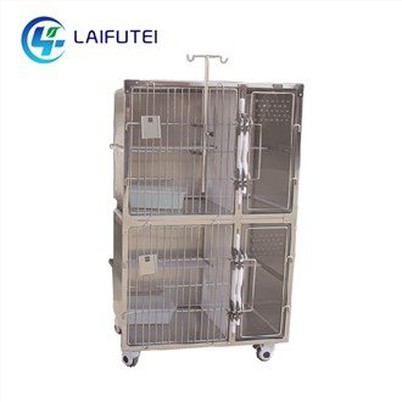Is It Healthy To Keep A Dog in A Cage?
Leave a message
Is it healthy to keep a dog in a cage?
Introduction:
Keeping a dog as a pet can be one of the most rewarding experiences in life. Dogs are known for their loyalty, companionship, and the love they bring to our lives. However, there are certain aspects of dog ownership that require careful consideration, such as providing them with a safe and suitable living environment. One contentious issue that often arises is whether keeping a dog in a cage is a healthy practice. In this article, we will explore this topic and delve into the various factors that should be taken into account before making a judgment.
The Purpose of a Dog Cage:
Dog cages, or crates, are commonly used for various reasons in dog ownership. They serve as a safe space for dogs, providing them with a den-like environment that mimics their natural instincts. Cages can be used for house-training, preventing destructive behavior when unsupervised, and provide a secure transportation option.
Benefits of Dog Cages:
1. Security and Safety: Dogs are den animals by nature, and a properly sized and comfortable cage can provide them with a sense of security. It can offer a safe haven where they can retreat to when they feel overwhelmed or stressed.
2. House-training: Cages can aid in the house-training process by teaching dogs to control their bladder and bowel movements. It helps establish a routine and prevents accidents when the owner is unable to supervise the dog.
3. Traveling: Dog cages are a secure way to transport dogs in vehicles, ensuring their safety and reducing distraction to the driver. It also reduces the risk of injury during sudden stops or accidents.
Potential Issues with Dog Cages:
While the use of cages can be beneficial under certain circumstances, there are potential issues that need to be considered:
1. Size and Duration: It is crucial to provide a cage that is large enough for the dog to stand, turn around, and lie down comfortably. Dogs should not be kept in a cage for extended periods as it can lead to physical and psychological distress.
2. Lack of Exercise and Stimulation: Dogs are active animals that require regular exercise and mental stimulation. If a dog is confined to a cage for prolonged periods without adequate exercise and playtime, it can lead to boredom, frustration, and behavior problems.
3. Emotional Well-being: Dogs are social creatures that thrive on human interaction and companionship. Confinement in a cage for extended periods can lead to feelings of isolation and loneliness, which can affect their emotional well-being.
4. Association with Punishment: If a dog perceives the cage as a place of punishment, it can cause fear and anxiety. This association can have long-term effects on their behavior and mental health.
Proper Utilization of Dog Cages:
To ensure the health and well-being of a dog, there are important considerations to keep in mind when using a cage:
1. Size and Comfort: The cage should be large enough for the dog to move around comfortably. It should have a comfortable bed, access to water, and toys to keep them occupied.
2. Time Limitations: Dogs should not be confined to the cage for more than a few hours at a time. They need regular breaks to stretch their legs, run, and interact with their owners.
3. Positive Association: The cage should be associated with positive experiences, such as treats, meals, and relaxation. This will help the dog feel more comfortable and prevent fear or anxiety.
4. Exercise and Enrichment: Regular exercise and mental stimulation are crucial for a dog''s overall well-being. Owners should provide ample opportunities for physical activity and mental enrichment outside the cage.
Alternative Options:
While cages can be appropriate in certain situations, there are alternative options that may be considered to provide a healthy living environment for dogs:
1. Dog-proofing: Puppy-proofing or dog-proofing a living space can help prevent destructive behavior without the need for confinement. This involves removing hazardous items and providing appropriate toys and outlets for energy.
2. Playpens and Gates: Playpens and gates can be used to create a secure space for dogs while allowing them more freedom to move around. This provides a compromise between complete confinement and unrestricted access to the house.
3. Crate Training: Crate training can be an effective alternative to using a cage. By gradually introducing the crate as a positive space, dogs can learn to associate it with comfort and safety, rather than punishment or confinement.
Conclusion:
The decision to use a cage in dog ownership should be made carefully, taking into consideration the individual needs and circumstances of the dog. While cages can provide security and aid in training, they should not be a substitute for proper exercise, socialization, and mental stimulation. A dog''s health and well-being should always be the top priority, and responsible ownership involves finding the right balance between ensuring safety and allowing freedom.







